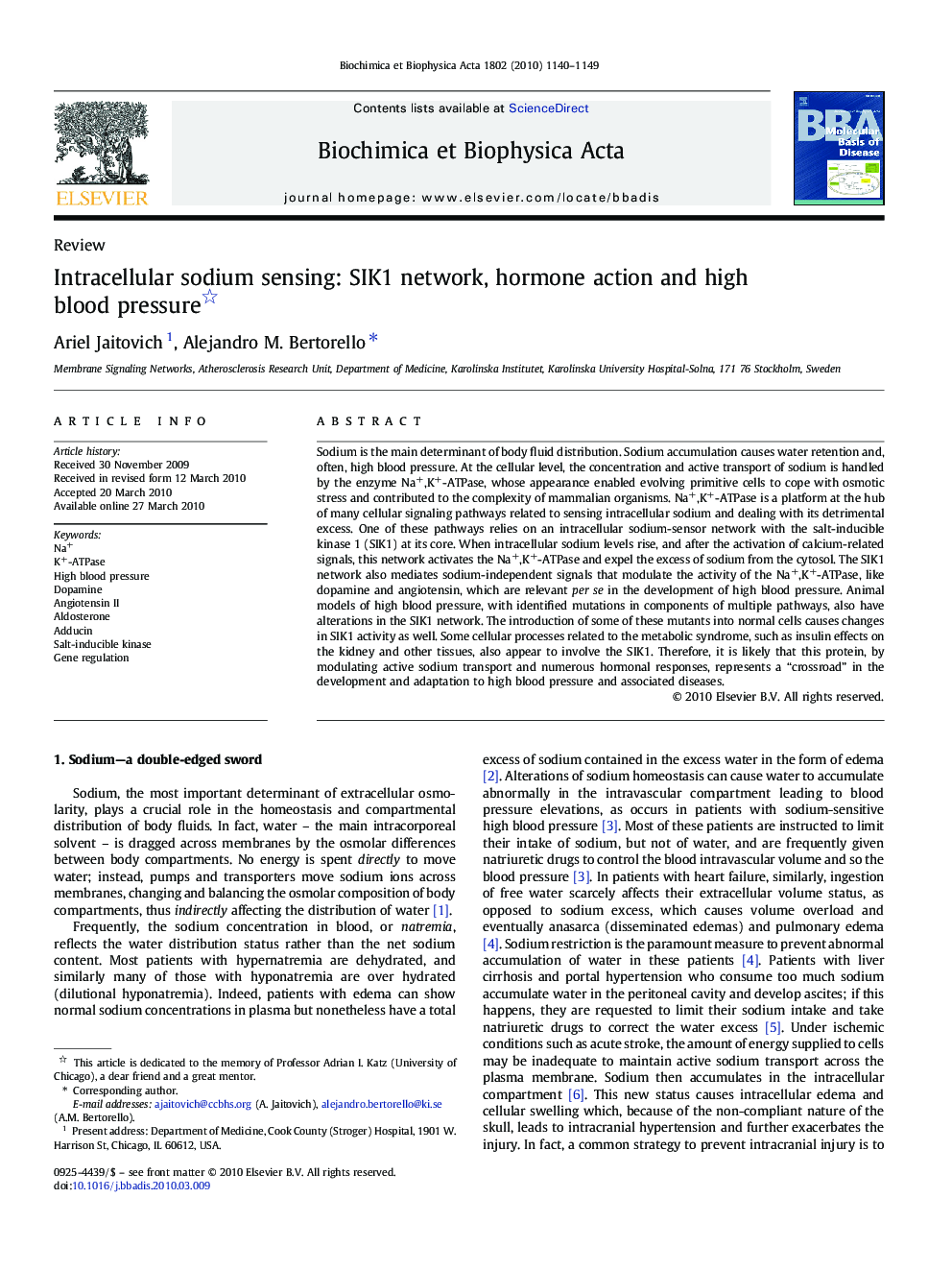| Article ID | Journal | Published Year | Pages | File Type |
|---|---|---|---|---|
| 1905231 | Biochimica et Biophysica Acta (BBA) - Molecular Basis of Disease | 2010 | 10 Pages |
Sodium is the main determinant of body fluid distribution. Sodium accumulation causes water retention and, often, high blood pressure. At the cellular level, the concentration and active transport of sodium is handled by the enzyme Na+,K+-ATPase, whose appearance enabled evolving primitive cells to cope with osmotic stress and contributed to the complexity of mammalian organisms. Na+,K+-ATPase is a platform at the hub of many cellular signaling pathways related to sensing intracellular sodium and dealing with its detrimental excess. One of these pathways relies on an intracellular sodium-sensor network with the salt-inducible kinase 1 (SIK1) at its core. When intracellular sodium levels rise, and after the activation of calcium-related signals, this network activates the Na+,K+-ATPase and expel the excess of sodium from the cytosol. The SIK1 network also mediates sodium-independent signals that modulate the activity of the Na+,K+-ATPase, like dopamine and angiotensin, which are relevant per se in the development of high blood pressure. Animal models of high blood pressure, with identified mutations in components of multiple pathways, also have alterations in the SIK1 network. The introduction of some of these mutants into normal cells causes changes in SIK1 activity as well. Some cellular processes related to the metabolic syndrome, such as insulin effects on the kidney and other tissues, also appear to involve the SIK1. Therefore, it is likely that this protein, by modulating active sodium transport and numerous hormonal responses, represents a “crossroad” in the development and adaptation to high blood pressure and associated diseases.
